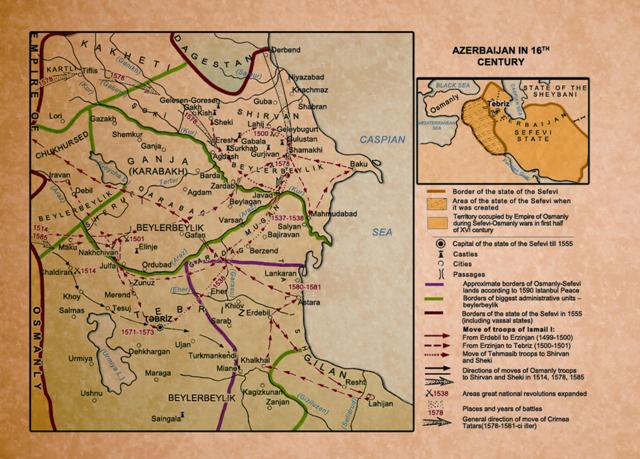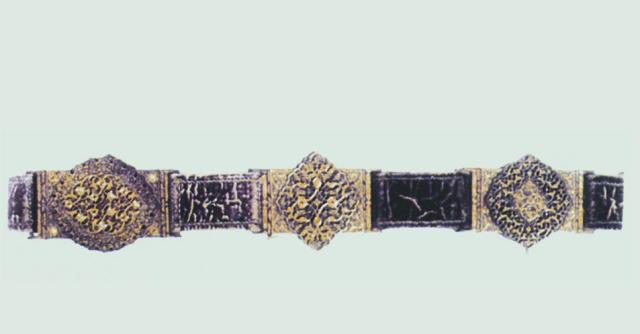In XVI century Azerbaijan was the socio-economic, political, cultural, and ideological center of the Safavid state (1501-1736). It included Azerbaijan, Iran, the Southern Turkmenistan, present-day Afghanistan (excluding the province of Balkh), the Arabian Iraq and other territories.The Azerbaijani Safavid state was founded by Shah Ismail I. Having received an excellent education, Ismail began his military and political activity since 1499, ascended to the throne in 1501 and turned his new state into a mighty empire. The name of the ruling Turkic dynasty of the state is connected with the name of Sheikh Safi-ad-din Ardabili, head of Safaviyya order. The capitals of the Safavid state were Tabriz (1501-1555), Gazwin (1555-1598) and Isfahan (since 1598). Its most socially, economically and culturally developed province was Azerbaijan. The Azerbaijani Qizilbash tribes (hence the Safavid state is sometimes named Qizilbash state) and the Ardabil feudals played a leading role in the government.
Shah Tahmasib I, son of Shah Ismail I, continued the policy of unification of the Azerbaijani territories. In 1538, the Shirvanshah state was abolished and incorporated into the Safavids. In 1551, the territory of Shaki became part of the state. The Safavid state entered a period of deep economic and political decline at the end of XVII century. In the coronation ceremony held in Mughan in March 1736, Nader Afshar was proclaimed shah by the assembled feudals, thus, effectively ending the formal power of the Safavid dynasty.
«Azerbaijani states in history», Baku, 2012, p.127












 Inauguration ceremony of President of Azerbaijan Ilham Aliyev was held
Inauguration ceremony of President of Azerbaijan Ilham Aliyev was held Ilham Aliyev wins presidential election with 92.05 percent of votes VIDEO
Ilham Aliyev wins presidential election with 92.05 percent of votes VIDEO President Ilham Aliyev, First Lady Mehriban Aliyeva and family members voted in Khankendi VIDEO
President Ilham Aliyev, First Lady Mehriban Aliyeva and family members voted in Khankendi VIDEO Plenary session of 6th Summit of Conference on Interaction and Confidence Building Measures in Asia gets underway in Astana. President Ilham Aliyev attends the plenary session VIDEO
Plenary session of 6th Summit of Conference on Interaction and Confidence Building Measures in Asia gets underway in Astana. President Ilham Aliyev attends the plenary session VIDEO President Ilham Aliyev was interviewed by Azerbaijani TV channels in Prague VIDEO
President Ilham Aliyev was interviewed by Azerbaijani TV channels in Prague VIDEO














